Beijing-Jiuzhaigou-Panda Breeding Center-Shanghai Package Tour
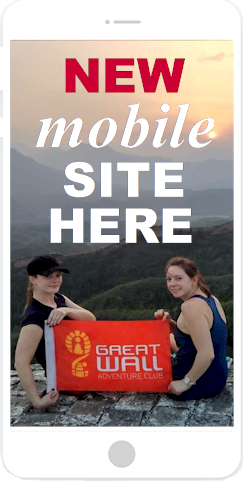
|
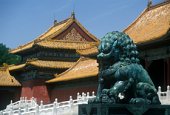
Forbidden City, Beijing
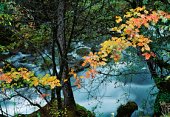
Jiuzhaigou
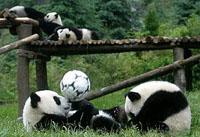
Giant Panda Breeding Center
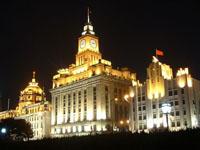
Shanghai
|
|
Beijing-Jiuzhaigou-Panda Breeding-Center-Shanghai
China Cultural
Heritage Tour (9-day)
Highlights:
� Visit Beijing, China�s most important city, which includes
the Great Wall, Tian�anmen Square, and the Forbidden City
� Witness the exotic and lush beauty of
Jiuzhaigouand its surrounding valleys and canyons
� Travel to the Sichuan capital of Chengdu, known for its pandas
and the giant Buddha at Leshan
� Go to Shanghai for the World Expo, one of the most important
and biggest spectacles in China�s modern history
Standard
Tour and Luxury Tour Packages Available.
B=(Breakfast) L=(lunch) D=(dinner) DEPARTURE: Daily
|
|
|
| |
TOUR ITINERARY |
 |
Tour
code:
P-BJPS |
|
Day 1: Airport
Transfer
When you arrive in Beijing, we will meet you and
drive you to your accommodation, a 4-star hotel in
the heart of Beijing, The rest of your day is up to
your discretion. |
Day 2: Beijing-Tian�anmen
Square+Forbidden City+ Temple of Heaven +Lama Temple
(B, L)
Our guide will meet you at your
hotel between 7:30-800am, and from we will start our
sightseeing. Our first stop is at Tian�anmen Square.
The largest public square in the world, Tiananmen
Square is seen as China�s political center. Its
grounds have seen some turbulent moments, from the
May 4th Movement of 1919 to the political turmoil of
1989. The south of the square is marked by the
Chairman Mao Memorial Hall, while the center of the
square is dominated by the Monument to the People�s
Heroes, an imposing 10-story granite obelisk. To the
east is the National Museum of China, and to the
west is the Great Hall of the People, home to
China�s legislative bodies. The north of the square
is dominated by the Gate of Heavenly Peace, known
for its iconic portrait of Mao Zedong, and is the
national emblem of China.
After walking across the square we will enter the
Forbidden City (known in Chinese as Gu Gong), the
largest surviving palace complex and the former home
of the emperors of the Ming and Qing Dynasty. The
Forbidden City is one of the greatest attractions in
the world. Built by the third Ming emperor between
1406-1422, the Forbidden City served as the official
residence to the Emperor of China until the last
emperor, Puyi, was forced to evacuate in 1924. The
Forbidden City is divided into two parts. The
southern section, or the Outer Court was where the
emperor exercised his supreme power over the nation.
The northern section, or the Inner Court was where
he lived with his royal family. Consisting of 980
buildings and with 8,707 bays of rooms, the
Forbidden City is the best example of classical
Chinese architecture in the world, and is a wonder
to behold.
We will then drive to the Temple of Heaven park. The
complex was visited by the Emperors of the Ming and
Qing dynasties for annual ceremonies of prayer to
Heaven for good harvest. The Temple of Heaven park
is best known for the Hall of Prayer for Good
Harvests, an iconic building famed for its
magnificent triple-gabled circular roof. You will
also have an opportunity to walk the same imperial
walkway that the same emperors walked hundreds of
years ago in their holy rites. You will also see
Beijing�s senior citizens using the park grounds for
everything from tai chi and ballroom dancing to
bullwhip practice! If you�d like we can join in for
their exercises, known as Tai Chi.
After visiting the Temple of Heaven we will go to
visit the Lhama Temple. Other than the temples in
Tibet this is the best Buddhist temple in China.
Work on the Lhama Temple originally began in 1694
during the Qing dynasty. It served as an official
residence for court eunuchs. It was then converted
into the home of the Prince Yong, a son of the
Kangxi Emperor and himself the future Yongzheng
Emperor. It was converted into a lamasery after his
ascension to the throne in 1722. Today the Lhama
Temple still functions as a monastery and temple of
the Geluk School of Tibetan Buddhism. Walking
through the temple your senses will be enveloped by
the incenses and the chanting of the visiting monks
and other followers. The rear Pavilion of Ten
Thousand Happinesses features a 26m tall statue of
the Maitreya Buddha cared from a single piece of
white sandalwood. It is one of three artworks in the
Lhama Temple that were included in the Guiness Book
of World Records, and it is not to be missed on your
visit.
We will then drop you off at your hotel, and the
night is up to your discretion. |
Day 3: Beijing-Mutianyu Great
Wall-Ming Tombs-Spirit Way-Olympic Green (B,L)
After a morning pickup at your hotel we will drive
directly to the Great Wall at Mutianyu. As one of
the best-preserved parts of the Great Wall, the
Mutianyu section of the Great Wall used to serve as
the northern barrier defending the capital and the
imperial tombs. First built in the mid-6th century
during the Northern Qi, Mutianyu Great Wall is older
than the Badaling section of the Great Wall. In the
Ming dynasty, under the supervision of General Xu Da,
construction of the present wall began on the
foundation of the wall of Northern Qi. In 1404, a
pass was built in the wall. In 1569, the Mutianyu
Great Wall was rebuilt and till today most parts of
it are well preserved.
Compared with other sections of Great Wall, the
Mutianyu Great Wall possesses unique characteristics
in its construction. Watchtowers are densely placed
along this section of the Great Wall - 22
watchtowers on this 2,250-meter-long stretch. The
Mutianyu Pass consists of 3 watchtowers, one big in
the center and two smaller on both sides. Standing
on the same terrace, the three watchtowers are
connected to each other inside and compose a rarely
seen structure among all sections of Great Wall.
For the afternoon, we will make the short trip to
the Ming Tombs. The Ming Tombs, about 50 km/31 miles
from Beijing, are where 13 emperors of the Ming
Dynasty (1368-1644) are buried. This site was
carefully chosen for its feng shui principles by the
third Ming emperor Yongle (who also moved the
capital from Nanjing to Beijing and began
construction on the Forbidden City). The tomb we
will visit, Dingling, is the tomb of the Wanli
Emperor. It is the only one of the Ming Dynasty
Tombs to have been excavated. It also remains the
only imperial tomb to have been excavated since the
founding of the People's Republic of China, After
viewing the tombs, we will head to the �Shenlu�, or
the Spirit Way. The Spirit Way leads into the
complex, lined with statues of guardian animals and
officials, with a front gate consisting of a
three-arches, painted red, and called the "Great Red
Gate". The Sacred Way, starts with a huge stone
memorial archway lying at the front of the area.
Constructed in 1540, during the Ming Dynasty, this
archway is one of the biggest stone archways in
China today.
On our way back to the city we will stop off at one
more sight, this one highlighting the more modern
aspects of Beijing. The Olympic Green was the center
of the event that captivated the world for two weeks
in August of 2008. The highlights include the Bird�s
Nest (officially known as the Beijing National
stadium) and the Water Cube (the Beijing National
Aquatics Center).
After walking the Olympic Green we will take you
back to your hotel, completing the day�s travels.
The night is at your discretion.
Optional: If you�d like, you can choose one of our 1
day Great Wall hiking tours and do that instead for
today. |
Day 4: Beijing-Jiuzhaigou
Valley (by air) (B, L, D)
You will be taken to the airport,
and you will catch your flight to
Jiuzhaigou Valley, in Sichuan province
of southwest China. On arrival at the airport, you
will be met by our English-speaking guide and you
will be drive to your hotel.
After stopping to freshen up we will go to the
Huanglong Scenic and Resort Area, renowned as a
�fairy land on earth�. Here we will see snow-clad
peaks, colorful ponds, along with glaciers that are
at its easternmost point in China. Along with all
this is a backdrop of forest as far as the eye can
see. ue to its layered calcium carbonated deposit
patterns, the valley resembles a golden dragon
winding its way through the virgin forest, stone
mountains and glaciers. Along the valley are
scattering numerous colorful ponds of different
sizes and shapes, which are strewn with gold colored
limestone deposit giving a shimmering golden hue to
water, so in sunlight, a golden dragon seems to
surge forth from the forest. Thus it was named 'Huanglong
Valley' (Yellow Dragon Valley).
The region covers about 600 square kilometers (about
230 square miles), so it is immense. So we will also
visit the Primitive Forest, and hike to the Rize
Valley (you have the option of taking a bus between
stops in our hikes). Rize Valley is known for its
Mirror Lake. In the rosy dawns, the lake is as
smooth as a mirror and blue sky, white clouds, the
mountains far away and trees nearby can all be seen
reflected in the lake. |
Day 5: Jiuzhaigou National
Park-Chengdu (by air) (B, L)
Our day will start with a drive to
Long Lake, which is nestled at the highest point of
the Zecawa Valley. Cedars all over the mountain
encircle the lake. When looked at from afar, the
lake is bathed in the sunshine, like the jade palace
in the heaven. At the side of the lake there is an
old tree, which is said to be the guardian of the
lake. From there, we will hike all the way down to
the Nuorilang Tourist Center. This hike will take
about 2 hours, so make sure you are in the proper
physical condition. Then we will press on to the
last valley known as Shuzheng. t is about 14
kilometers (about nine miles) in length with over 40
lakes, representing 40% of all the lakes in
Jiuzhaigou. The major scenic spots in Shuzheng
Valley are Double-Dragon Lake, Bonsai Beach, Reed
Lake, Spark Lake, Tiger Lake, Shuzheng Waterfall,
Rhinoceros Lake, and Nuorilang Waterfall, etc.
After our hike, you will be driven to the airport,
and from there you will make the short trip to
Chengdu, the capital of Sichuan province. Upon
arrival, you will be met by one of our guides and
will be taken to your 4star hotel in central
Chengdu. The rest of the night is at your
discretion. |
Day 6: Leshan Giant Buddha (B,
L)
Today�s activities will revolve
around seeing the Leshan Buddha, the largest
representation of Buddha in the world. We will make
the 160km (100 mile ) drive in the morning.
The Leshan Giant Buddha is a statue of Maitreya (a
Bodhisattva usually represented as a very stout monk
with a broad smile on his face and with his naked
breast and paunch exposed to view) in sitting
posture. The Buddha is located to the east of Leshan
City, Sichuan Province, at the confluence of three
rivers, namely, Min River, Qingyi River, and Dadu
River. The statue makes itself the most renowned
scenic spot in Leshan City. In December, 1996, the
location of the Buddha was included by UNESCO on the
list of the World Heritage sites. Begun in the year
713 in the Tang Dynasty, and finished in the year
803, the statue took people more than 90 years to
carve. During these years, thousands of workers had
expended their efforts and wisdom on the project. As
the biggest carved stone Buddha in the world, Leshan
Giant Buddha is featured in poetry, song and story.
We will then drive back to Chengdu, where the night
can be spent at your leisure. You might want to
explore the city�s numerous traditional teahouses,
or maybe partake in some Sichuan Opera. |
Day 7:
Panda Breeding Center-Chengdu-Shanghai (by air) (B,
L)
After an early morning start, we
will visit the Bifeng Gorge Base of Protection and
Research, the home of some of China�s most beloved
and famed natural animal, the Panda. In the May 12th
2008 Wenchuan Earthquake,the pandas suffered a
crushing blow and over fifty giant pandas living in
captivity became completely homeless. In order to
save these national treasures, Wolong National
Natural Reserve has, since May 15th, carried out an
evacuation plan. Twenty-seven giant pandas were
transferred in batches to Chengdu, Fuzhou and Beijng,
and the rest were moved to Bifeng Gorge Base of
China Panda Protection and Research Center.
The pandas are assured of healthy growth in their
new home, and good news continually flows from
Bifeng Gorge Base. In the morning on July 6th, 2008,
the panda "Guo Guo" gave birth to the first twin
cubs in the base. Guo Guo, the great panda mother,
came to the base on June 24th when she was 119 days
pregnant. She was really strong and brave to have
these baby pandas after surviving the big
earthquake, overcoming the difficulties of bumping
and shaking on the long journey, and adjusting
herself to the new environment. The center is
divided into the giant panda breeding zone, baby
giant panda care zone, research center, bamboo woods
and office area.
Lunch will be at a local Sichuan restaurant.
Sichuanese has long held a reputation as one of the
best provincial styles of Chinese cooking. Sichuan
cuisine is famed for its spicy dishes. How much will
you be able to handle?
Then it is off to the airport to complete the final
leg of your China adventure. You will fly to
Shanghai, and will be met by one of our guides upon
arrival. You�ll then be driven to a 4 star hotel
located in Shanghai�s center. |
Day 8: Shanghai
Today it is up to you as to what you
would like to see. Shanghai is one of the world�s
great cities, and there is so much to see. If you�d
like, you can sign up for one of our city tours that
will show you as much as Shanghai as possible in a
day�s time.
You can walk on The Bund, a famous waterfront and
regarded as the symbol of Shanghai for hundreds of
years. It affords marvelous views across the river
of the Pudong district and its numerous towers. The
most famous and attractive sight which is at the
west side of the Bund are the 52 various buildings
of different architectural styles including Gothic,
Baroque, Romanesque, Classicism and the Renaissance.
You can also stroll through Yuyuan Garden, a famed
classical garden. The garden may be small, but it
contains pavilions, halls, rockeries, ponds and
cloisters, and all have unique characteristics.
There are six main scenic areas in the garden:
Sansui Hall, Wanhua Chamber, Dianchun Hall, Huijing
Hall, Yuhua Hall and the Inner Garden. Each area
features several scenic spots within its borders.
Of course the highlight of Shanghai today is the
ongoing World Expo, held in Shanghai from May to
November of 2010. The theme of this year�s expo is
�Better city-better life�. In terms of gross
numbers, this year�s expo is expected to be the most
visited in its history. The Shanghai Expo features
the participation of over 190 countries and world
organizations. In addition to 45 countries� own
pavilions showcasing their ideas on the future of
cities, there are also five central theme pavilions
exploring different aspects of urban life: Urban
Footprints, Urban Planet, Urban Dwellers, Urban
Beings, and Urban Dreams. We can help arrange for
you to get tickets to this once in a lifetime
opportunity, so please notify us if you�d like to
attend.
Note: if you feel that your time here is too short,
you have the option of extending your tour to
include a trip to Suzhou, widely regarded as
�China�s Venice�, or the Tongli water town, a
charming little river city where you can explore its
bridges, shops, homes, and streets. |
Day 9: Exit Shanghai
You will be driven to Shanghai�s
Pudong International Airport to catch your flight
home or to your next destination, thus ending your
stay in China.
Note: you have the option of extending your tour to
include a trip to Hong Kong, known as the �Oriental
Pearl�. |
|
Stuff to bring:
� Sturdy shoes or boots, sunglasses and sunscreen
� Bug spray and any other items needed in dealing with the tropical heat
� Tips for a job well done by your guides and drivers, money for any
personal expenses not mentioned
|

